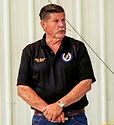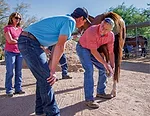Advertise Follow Us
Articles by Jeremy McGovern
The Cost of Treating Laminitis
A veterinarian and three farriers discuss the cost of treatment and how it affects their approach to helping the horse
Read More
Reinforcing the Basics of Horseshoeing
In his fifth decade of shoeing, Bob Pethick still holds true to the principles that have helped him manage horses’ feet
Read More
Ideas for Improving the Perceived Value of Your Farrier Practice
Yes, you need to keep horses sound, but how your clients perceive you may have more to do with other factors
Read More
Recipe for Success as a Therapeutic Farrier
Arizona farrier John Samsill explains how being effective in therapeutic shoeing relies on much more than skills and knowledge.
Read More
Treatment For Dealing With Penetrating Injuries
Iowa State University veterinarian and farrier discuss the street nail procedure as treatment and their roles in helping horses recover from this trauma
Read More











